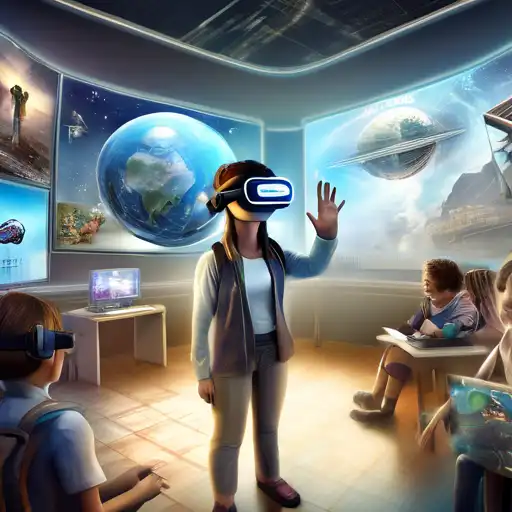Introduction to Virtual Reality in Education
Virtual Reality (VR) is rapidly transforming the educational landscape, offering immersive learning experiences that were once beyond imagination. This technology enables students to explore historical sites, dissect complex biological structures, and even conduct chemical experiments in a safe, virtual environment. The potential of VR in education is limitless, providing a dynamic platform for interactive learning.
The Benefits of VR in Learning
VR technology offers numerous advantages in the educational sector, including enhanced engagement, improved retention rates, and the ability to simulate real-world scenarios. Here are some key benefits:
- Engagement: VR captivates students' attention like never before, making learning more enjoyable and effective.
- Accessibility: Students can access virtual classrooms and resources from anywhere, breaking down geographical barriers.
- Practical Experience: VR provides hands-on experience in fields such as medicine, engineering, and science, without the associated risks or costs.
Challenges and Considerations
Despite its benefits, integrating VR into education comes with challenges. The cost of VR equipment and the need for technical support can be prohibitive for some institutions. Additionally, there's a learning curve associated with using VR technology effectively in the classroom.
Future Prospects
The future of VR in education looks promising, with advancements in technology making it more accessible and affordable. As VR continues to evolve, it will play a pivotal role in shaping the future of education, offering personalized and immersive learning experiences for students worldwide.
For more insights into innovative learning technologies, check out our article on EdTech Trends Shaping the Future of Education.
Conclusion
Virtual Reality is set to redefine the educational experience, making learning more interactive, engaging, and effective. While challenges remain, the potential benefits of VR in education are too significant to ignore. As we move forward, it's essential for educators and institutions to embrace this technology, preparing students for a future where digital and virtual learning environments are the norm.
